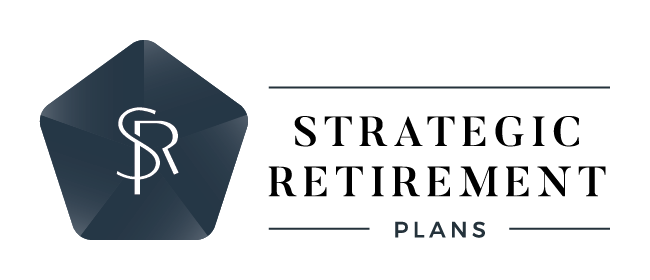The end of the year and the beginning of the year are great times to assess, review and apply changes to your financial plans and habits. With new rules this year related to the pandemic, as well as several tax and retirement changes that carried over from last year, it’s not too early to get started. Here are a few things that Commonwealth Financial Network put together for you to consider and if you are a client, discuss with Gabe and Ryan.
1) Increase Retirement Contributions to the Max
Workplace accounts:
Maximize contributions to your workplace plans to take full advantage of any employer match benefit. For 2021, the maximum employee deferral for 401(k), 403(b), and 457 accounts is $19,500, and individuals ages 50 and older can defer an additional catch-up of $6,500. For SIMPLE IRAs, the deferral remains $13,500 and the catch-up is $3,000.
Traditional IRAs:
Maxing out contributions to a traditional IRA is another option. The SECURE Act repealed the maximum age for contributions, so individuals ages 70½ and older who earned income in 2021 can contribute to a traditional IRA. Modified adjusted gross income (MAGI) limits for contributions to traditional and Roth IRAs increased in 2021, so be sure to ask about MAGI eligibility thresholds. The maximum contribution amount to a traditional or Roth IRA remains $6,000, with a $1,000 catch-up for clients ages 50 and older.
2) Spend Flexible Spending Account (FSA) Dollars and Contribute to Health Savings Accounts (HSAs)
In 2020, the IRS relaxed certain use-or-lose restrictions for FSAs that remain in effect. Employers can extend the grace period for unused FSAs to up to 12 months in 2021. In addition, if you have dependent care FSAs you can save as much as $10,500 in 2021.
Now is also a great time to consider maximum HSA contributions if you have high-deductible health plans (HDHPs). In 2021, the maximum contribution for an individual HSA is $3,600 and the maximum for a family HDHP is $7,200. Plus, if you are 50 and older, you can contribute an additional $1,000.
3) Assess Marginal and Capital Gains Tax Matters
If you are on the threshold of a tax bracket you may be able to put yourselves in the lower one by deferring some income to 2022. Here are a few thresholds to keep in mind:
- 37 percent marginal tax rate: Taxable incomes exceeding $523,600 (individual), $628,300 (married filing jointly), $523,600 (head of household), and $314,150 (married filing separately)
- 20 percent capital gains tax rate: Taxable incomes exceeding $445,851 (individual), $501,601 (married filing jointly), $473,751 (head of household), and $250,801 (married filing separately)
- 3.8 percent surtax on investment income: The lesser of net investment income or the excess of MAGI greater than $200,000 (individual), $250,000 (married filing jointly), $200,000 (head of household), and $125,000 (married filing separately)
- 0.9 percent additional Medicare tax: W-2 earnings and self-employment income above the same MAGI thresholds as the investment income surtax
These thresholds and rates are current; however, keep in mind there is a bill pending in Congress that could change them.
4) Keep an Eye on Details of the American Rescue Plan (ARP)
This statute, signed into law by President Biden in March 2021, changed the Child Tax Credit and the Child and Dependent Care Credit (for 2021 only), as well as the taxation of unemployment compensation, and canceled student debt.
- Child Tax Credit. In July 2021, the IRS began issuing 50 percent of this credit in six monthly advanced payments. Payments are based on 2020 income, so you may need to reconcile the advanced payments if your income increased in 2021.
- Child and Dependent Care Credit. In 2021, the credit is fully refundable. Families earning less than $125,000 annually may claim a 50 percent refundable credit on care expenses of $8,000 for one child or dependent or expenses of $16,000 for two or more children or dependents.
- Unemployment compensation. In 2020, $10,500 of unemployment benefits were exempt from income tax. This exemption does not apply in 2021, so if you received benefits but didn’t have taxes withheld, you may owe taxes.
- Canceled student debt. Under the ARP, borrowers won’t owe taxes on student loans that are canceled or forgiven between 2021 and 2025. This relief applies to federal and private loans.
5) Review and Rebalance Portfolios
Year-end financial planning should include a review of capital gains and losses. This process may reveal tax planning opportunities, such as harvesting losses to offset capital gains.
6) Tap into the Tax Benefits of Charitable Giving
The above-the-line deduction under the CARES Act was extended to 2021, meaning you can deduct up to $300 per person ($600 for joint filers) for cash charitable contributions. If you itemize, the deduction of up to 100 percent for all cash charitable contributions is available in 2021. (Please note: This deduction doesn’t apply to cash contributions made to donor-advised funds or private, nonoperating foundations.)
Qualified charitable distribution (QCD) rules haven’t changed, so those older than 70½ can make a QCD of up to $100,000 directly to a charity and married joint filers may exclude up to $100,000 donated from each spouse’s IRA.
7) Prepare a Strategy for Stock Options
Alternative minimum tax (AMT) exemption limits increased in 2021 to $73,600 for single tax filers and $114,600 for married joint filers. Depending on AMT projections, you may want to wait until January 2022 to exercise incentive stock options.
8) Plan for Estimated Taxes and RMDs
- The SECURE Act allows individuals who reach age 70½ after January 1, 2020, to wait until they turn 72 to start taking RMDs. You must take RMDs in 2021.
- If you took coronavirus-related distributions (CRDs) from your retirement plans, review the repayment option you chose in 2020. Remember, the choice to not repay all of a CRD in 2020 is irrevocable.
- Individuals who took a 401(k) loan after March 27, 2020, will need to establish a repayment plan and confirm the amount of accrued interest.
9) Adjust Withholding and Get Ready to Repay Student Loans
If you may be subject to an estimated tax penalty you can request that employers (via Form W-4) adjust your withholding to cover shortfalls. The IRS tax withholding estimator can assist you.
Student loan payments, which the CARES Act paused in March 2020, are scheduled to resume in February 2022. If you reduced other debt during this period, you’ll need to adjust your monthly cash flow to include student loan payments.
10) Evaluate Estate Plans
It’s always a good idea to review estate plans as part of year-end financial planning. Depending on your net worth, establishing a defective grantor trust, spousal lifetime access trust, or irrevocable life insurance trust may be an effective strategy to reduce estate tax exposure. Be sure to update beneficiary designations and review trustee appointments, power of attorney provisions, and health care directives.
Please reach out to us at, SRP, if you’d like to discuss any of these items. If you are not yet an SRP client, we’d love to extend a complimentary discovery call to determine if we could be of help to you.
Commonwealth Financial Network® does not provide legal or tax advice. You should consult a legal or tax professional regarding your individual situation. Third-party links are provided to you as a courtesy and are for informational purposes only. We make no representation as to the completeness or accuracy of information provided at these websites.


